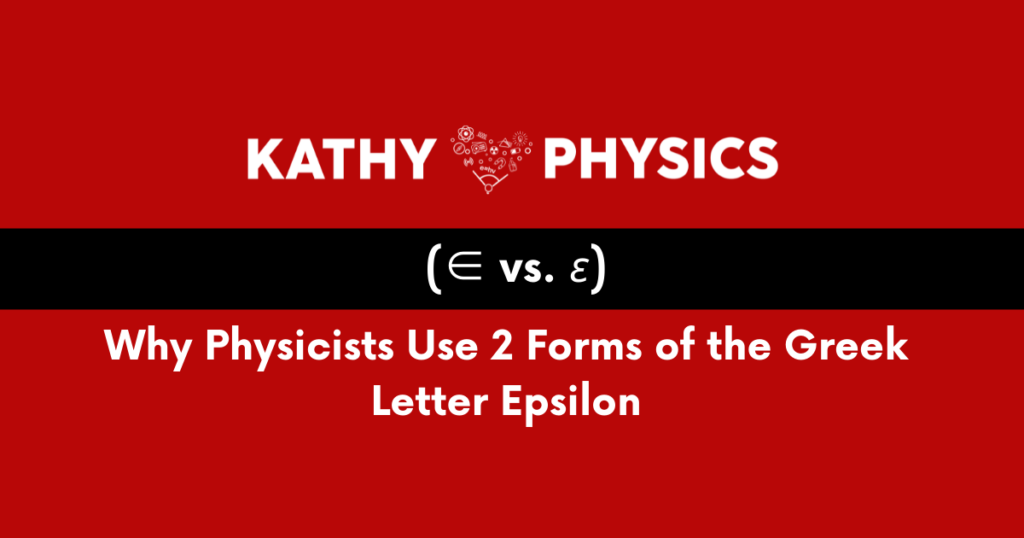When I learned Maxwell’s equations in college, I was taught to draw the permittivity with a Greek letter epsilon that looked like a c with a line in it and not like a backwards 3 like usual.
Table Of Contents
Why Physicists Use 2 Forms of the Greek Letter Epsilon
Image References
Reference
Why Physicists Use 2 Forms of the Greek Letter Epsilon
It turns out that this alternative epsilon is a mistake that happened when an English printing company accidentally used a newly minted math symbol and ancient version of epsilon in an English translation of Heinrich Hertz’s papers in 1893.
The reason I know it was a mistake is because Hertz’s original papers in German from 1890 and the German collection of his papers from 1894 use the normal form of epsilon.
Soon people started to write Maxwell’s equations with an epsilon that looks like the math symbol because people thought that was what Hertz intended. Physicists have used two versions of epsilon ever since!
Image References
References
1 Hertz, Heinrich “On the Fundamental Equations of Electromagnetics for Bodies at Rest” (March 19, 1890) Electric Waves (1893) p. 200 https://www.google.com/books/edition/_/EJdAAAAAIAAJ?sa=X&ved=2ahUKEwiaiYT93Mv5AhUDJn0KHZ44DnQQ7_IDegQIExAC
2 Hertz, Heinrich “Ueber die Grundgleichungen der Elektrodynamik” (March, 1890) Annalen der Physik vol. 277 issue 11, p. 110 https://www.deutsche-digitale-bibliothek.de/item/E4EHCECIDIMIFJQCP6HXHJCDYPXNMEZZ
3 Hertz, Heinrich “Ueber die Grundgleichungen der Elektrodynamik” Untersuchungen über die Ausbreitung der elektrischen Kraft (1894) p. 213 https://www.google.com/books/edition/Untersuchungen_über_die_Ausbreitung_der/WWcSAAAAIAAJ?hl=en&gbpv=0
For example, Feynman Lectures of Physics (1964) https://www.feynmanlectures.caltech.edu/flpphotos.html#S18
/*54745756836*/

Pingback: History of Maxwell’s Equations: #1 Gauss’s Law - Kathy Loves Physics